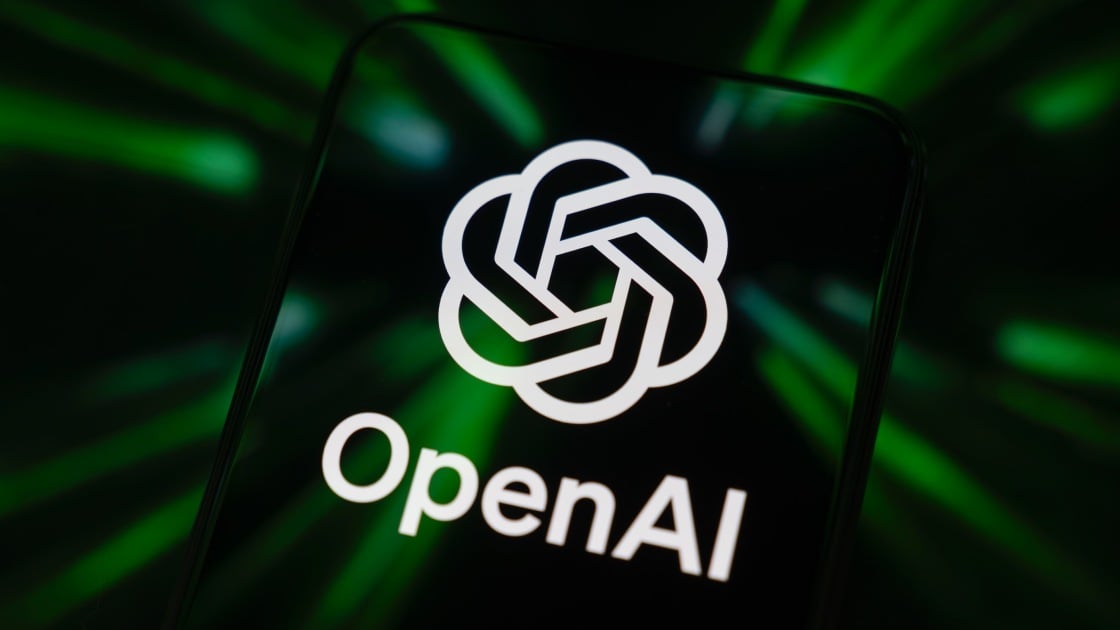Spending hundreds of billions on AI might scream “tech bubble,” but OpenAI insists its investments are all about keeping up with the relentless demand.
“I think that we are still very much at the .01% of where we’re going,” OpenAI President Greg Brockman told journalists during a Q&A session at the DevDay conference on Monday.
The company has recently made massive deals with Nvidia, Oracle, and now AMD so it can build energy-hungry gigawatt data centers to power next-generation AI. The spending may sound over the top—especially since it’ll mean building millions of new enterprise GPUs and even new power plants—to keep such data centers running.
But in OpenAI’s view, the company is merely scratching the surface of its full potential. “The degree to which, if we had a 3x, 10x more compute, we would just build—offer so many more products, offer more services that people would love to consume more,” OpenAI CEO Sam Altman said during the Q&A. “This can go very far.”

(Credit: PCMag/Michael Kan)
One of the company’s latest projects is the Sora app, an AI video generator that might one day rival TikTok. Still, some studies have cast doubt on whether generative AI can substantially improve worker productivity. Others fear AI will replace human workers in millions of jobs.
Nevertheless, Brockman said the industry should embrace the notion that AI will become the main growth engine for the economy by boosting worker productivity. “I think the thing you have to believe for all of this to make sense is something that we’ve believed for a long time: Which is that AI is going to become, probably not in the too distant future, the fundamental driver of economic growth,” he said.

Get Our Best Stories!
Your Daily Dose of Our Top Tech News
Thanks for signing up!
Your subscription has been confirmed. Keep an eye on your inbox!
“If you believe that, then you start to see, asking how much compute you want is a little bit like asking how much workforce you want,” he added. Brockman also went as far to say the AI industry could one day try to serve every user on the planet, or 8 billion people, which makes the company’s investment seem small in comparison.
“Our Nvidia deal, for example, is like for an order of 5 million GPUs,” he said. “And then you start to realize there are almost 10 billion humans on the planet. We’re talking about 1000x too few GPUs for our already quite large build.”

Sam Altman (Credit: Kyle Grillot/Bloomberg via Getty Images)
Still, Altman at one point said, “It’s tempting to write the bubble story… In fact, there are many parts of AI that I think are bubbly,” alluding to huge, but questionable, investments going to other AI startups. However, OpenAI’s CEO said it’s clear that the company’s own technology has been leading to tangible benefits for users. On Monday, OpenAI revealed ChatGPT now has over 800 million weekly users —up from 100 million back in 2023.
Recommended by Our Editors
The company is still navigating how to generate revenue from all of its users. However, OpenAI COO Brad Lightcap justified the wait-and-see approach. “If you had said that the business model of ChatGPT was going to be a consumer subscription for $20 a month, people would say that you’re crazy. Because consumers don’t pay for software,” he said. “Yet now we got tens of millions of users that pay for it.”
“There has to be this exploration process for how these things work,” Lightcap added. “There’s going to be over investment, there’s going to be incorrect investment. But there’s going to be a lot of correct investment.”
Disclosure: Ziff Davis, PCMag’s parent company, filed a lawsuit against OpenAI in April 2025, alleging it infringed Ziff Davis copyrights in training and operating its AI systems.
About Our Expert

Michael Kan
Senior Reporter
Experience
I’ve been a journalist for over 15 years. I got my start as a schools and cities reporter in Kansas City and joined PCMag in 2017, where I cover satellite internet services, cybersecurity, PC hardware, and more. I’m currently based in San Francisco, but previously spent over five years in China, covering the country’s technology sector.
Since 2020, I’ve covered the launch and explosive growth of SpaceX’s Starlink satellite internet service, writing 600+ stories on availability and feature launches, but also the regulatory battles over the expansion of satellite constellations, fights with rival providers like AST SpaceMobile and Amazon, and the effort to expand into satellite-based mobile service. I’ve combed through FCC filings for the latest news and driven to remote corners of California to test Starlink’s cellular service.
I also cover cyber threats, from ransomware gangs to the emergence of AI-based malware. Earlier this year, the FTC forced Avast to pay consumers $16.5 million for secretly harvesting and selling their personal information to third-party clients, as revealed in my joint investigation with Motherboard.
I also cover the PC graphics card market. Pandemic-era shortages led me to camp out in front of a Best Buy to get an RTX 3000. I’m now following how President Trump’s tariffs will affect the industry. I’m always eager to learn more, so please jump in the comments with feedback and send me tips.
This article was published by WTVG on 2025-10-06 18:18:00
View Original Post






